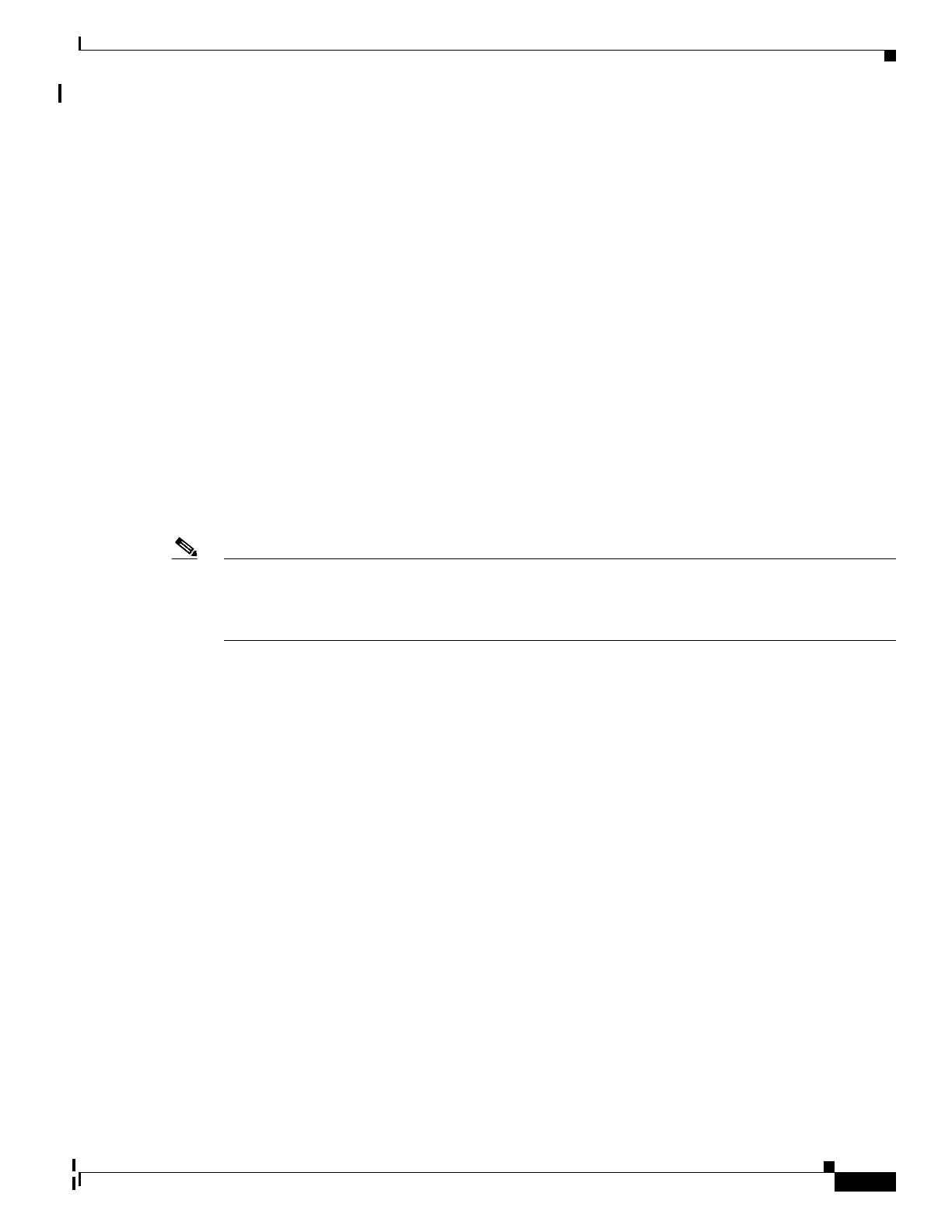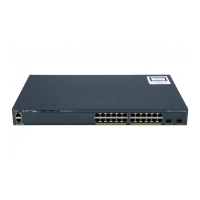9-25
Catalyst 2960 and 2960-S Switches Software Configuration Guide, Release 15.0(1)SE
OL-26520-01
Chapter 9 Configuring Switch-Based Authentication
Controlling Switch Access with RADIUS
Disconnect-NAK message with the “Session Context Not Found” error-code attribute. If the session is
located, the switch terminates the session. After the session has been completely removed, the switch
returns a Disconnect-ACK.
If the switch fails-over to a standby switch before returning a Disconnect-ACK to the client, the process
is repeated on the new active switch when the request is re-sent from the client. If the session is not found
following re-sending, a Disconnect-ACK is sent with the “Session Context Not Found” error-code
attribute.
CoA Request: Disable Host Port
This command is carried in a standard CoA-Request message that has this new VSA:
Cisco:Avpair="subscriber:command=disable-host-port"
Because this command is session-oriented, it must be accompanied by one or more of the session
identification attributes described in the “Session Identification” section on page 9-22. If the session
cannot be located, the switch returns a CoA-NAK message with the “Session Context Not Found”
error-code attribute. If the session is located, the switch disables the hosting port and returns a CoA-ACK
message.
If the switch fails before returning a CoA-ACK to the client, the process is repeated on the new active
switch when the request is re-sent from the client. If the switch fails after returning a CoA-ACK message
to the client but before the operation has completed, the operation is restarted on the new active switch.
Note A Disconnect-Request failure following command re-sending could be the result of either a successful
session termination before change-over (if the Disconnect-ACK was not sent) or a session termination
by other means (for example, a link failure) that occurred after the original command was issued and
before the standby switch became active.
CoA Request: Bounce-Port
This command is carried in a standard CoA-Request message that contains this VSA:
Cisco:Avpair="subscriber:command=bounce-host-port"
Because this command is session-oriented, it must be accompanied by one or more of the session
identification attributes described in the “Session Identification” section on page 9-22. If the session
cannot be located, the switch returns a CoA-NAK message with the “Session Context Not Found”
error-code attribute. If the session is located, the switch disables the hosting port for a period of 10
seconds, re-enables it (port-bounce), and returns a CoA-ACK.
If the switch fails before returning a CoA-ACK to the client, the process is repeated on the new active
switch when the request is re-sent from the client. If the switch fails after returning a CoA-ACK message
to the client but before the operation has completed, the operation is re-started on the new active switch.
Stacking Guidelines for Session Termination
No special handling is required for CoA Disconnect-Request messages in a switch stack.
Stacking Guidelines for CoA-Request Bounce-Port
Because the bounce-port command is targeted at a session, not a port, if the session is not found, the
command cannot be executed.

